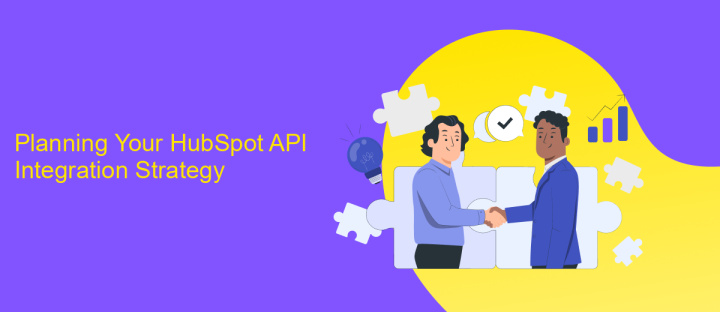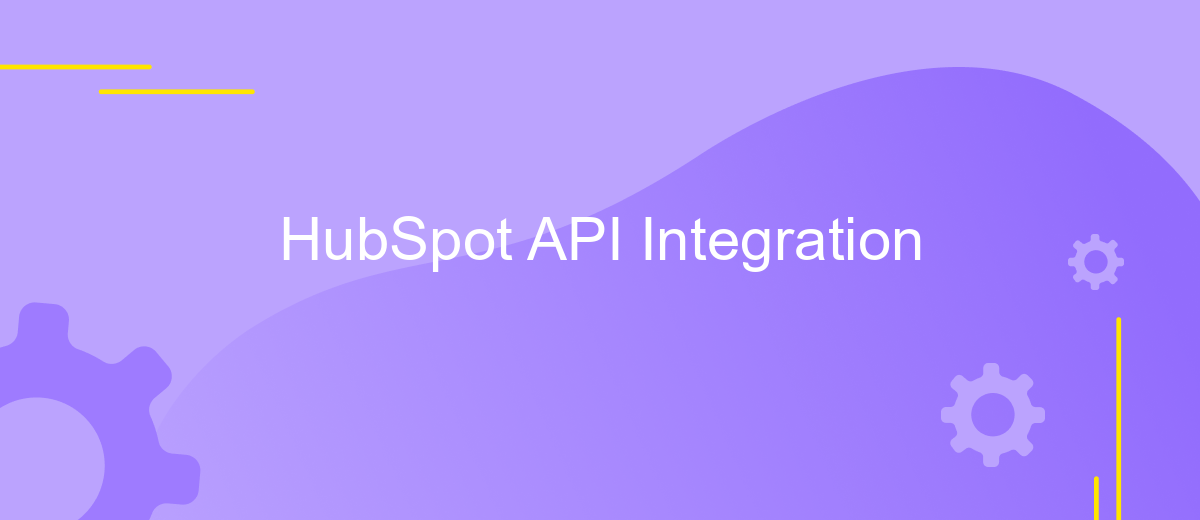HubSpot API Integration
Integrating with HubSpot's API can revolutionize how businesses manage their marketing, sales, and service efforts. By leveraging this powerful tool, companies can seamlessly connect their existing systems with HubSpot, automate workflows, and access valuable insights. This article explores the key benefits and steps involved in HubSpot API integration, guiding you through the process to enhance your business operations and drive growth efficiently.
Understanding the HubSpot API and its Capabilities
The HubSpot API is a powerful tool that enables developers to integrate HubSpot's extensive suite of marketing, sales, and service functionalities into their own applications. By leveraging the API, businesses can automate processes, synchronize data, and enhance customer engagement. The API provides a robust framework for accessing HubSpot's features, allowing for seamless data exchange and process automation.
- Contacts API: Manage and manipulate contact information, including creating, updating, and retrieving contact details.
- Deals API: Track and manage sales deals, enabling the creation and updating of deal records.
- Engagements API: Log and retrieve interactions such as emails, calls, and meetings to maintain a comprehensive activity history.
- Companies API: Handle company data, facilitating the association of contacts and deals with specific organizations.
- Tickets API: Manage customer support tickets, ensuring efficient issue tracking and resolution.
Understanding the capabilities of the HubSpot API is crucial for businesses aiming to streamline their operations and enhance customer experiences. By integrating these functionalities, companies can create a unified system that supports their growth objectives and improves operational efficiency. The API's flexibility and comprehensive documentation make it an invaluable resource for developers looking to expand their application's capabilities.
Planning Your HubSpot API Integration Strategy

When planning your HubSpot API integration strategy, it's essential to start by clearly defining your business objectives. Identify the specific goals you aim to achieve with the integration, such as enhancing data synchronization, automating marketing processes, or improving customer relationship management. Understanding these objectives will guide your integration approach and help you prioritize the necessary API functionalities. Additionally, assess your current systems and data flow to ensure compatibility with HubSpot's API, and identify any potential challenges that may arise during the integration process.
Once your objectives are clear, consider utilizing integration platforms like ApiX-Drive to streamline the process. ApiX-Drive offers a user-friendly interface that simplifies the connection between HubSpot and other applications, reducing the need for extensive coding knowledge. This tool can help automate workflows and ensure seamless data transfer between systems, ultimately saving time and resources. As you develop your integration strategy, ensure to plan for ongoing maintenance and updates, keeping in mind the evolving nature of both your business needs and HubSpot's API capabilities.
Implementing the HubSpot API Integration

Integrating the HubSpot API into your application can significantly enhance your marketing, sales, and customer service processes. To get started, ensure you have a HubSpot account and access to the developer portal. Familiarize yourself with the API documentation to understand its capabilities and limitations. It's crucial to plan your integration strategy by identifying the specific data and functionalities you need from HubSpot.
- Register your application in the HubSpot developer portal to obtain your API key or OAuth credentials.
- Set up a secure environment for storing your credentials to prevent unauthorized access.
- Use the appropriate API endpoints to connect your application with HubSpot, ensuring you follow best practices for authentication and data handling.
- Test the integration thoroughly to ensure data is being exchanged accurately and efficiently.
- Monitor the integration regularly to address any issues and to adapt to updates in the HubSpot API.
Once implemented, the HubSpot API integration can streamline your operations by automating workflows and providing real-time data insights. Continuous monitoring and optimization of the integration will ensure it remains effective and aligned with your business goals. By leveraging the full potential of the HubSpot API, you can enhance customer engagement and drive growth.
Testing and Troubleshooting Your Integration

Once you've integrated with the HubSpot API, it's crucial to test your implementation to ensure everything functions as expected. Begin by verifying that your API requests return the correct data and that your application handles this data appropriately. Testing should cover various scenarios, including successful data retrieval, error handling, and edge cases.
During testing, monitor the API response times and ensure that your integration can handle the expected load. It's also important to test the security of your integration, ensuring that sensitive data is protected and that authentication processes are robust.
- Check API request and response logs for any anomalies or errors.
- Use tools like Postman or Insomnia to simulate API calls and validate responses.
- Implement logging within your application to capture any integration issues.
- Test with different user roles to ensure access controls are correctly implemented.
If issues arise, consult the HubSpot API documentation and community forums for guidance. Debugging may involve reviewing your code for errors, checking network configurations, or contacting HubSpot support for assistance. Regularly updating your integration to align with API changes will help prevent future issues.


Maintaining and Optimizing Your HubSpot API Integration
Maintaining and optimizing your HubSpot API integration is essential for ensuring seamless operations and maximizing the benefits of your CRM system. Regularly monitor your API usage to identify any bottlenecks or inefficiencies. This involves checking for error messages, response times, and data synchronization issues. Keeping your API documentation up to date is also crucial, as it helps your team understand the integration's capabilities and limitations. Additionally, consider implementing automated testing to catch potential issues before they affect your operations.
Optimizing your integration can involve utilizing tools like ApiX-Drive, which simplifies the process of connecting HubSpot with other applications. ApiX-Drive allows for easy setup and management of integrations, enabling you to automate workflows without extensive coding knowledge. By leveraging such services, you can enhance data flow and reduce manual tasks, ultimately improving productivity. Regularly review and update your integration settings to ensure they align with your evolving business needs, and always stay informed about new HubSpot API features and updates to take full advantage of the platform's capabilities.
FAQ
What is HubSpot API Integration?
How can I authenticate my application with the HubSpot API?
What are the rate limits for HubSpot API calls?
Can I automate data synchronization between HubSpot and other platforms?
What should I do if I encounter errors while using the HubSpot API?
Apix-Drive is a simple and efficient system connector that will help you automate routine tasks and optimize business processes. You can save time and money, direct these resources to more important purposes. Test ApiX-Drive and make sure that this tool will relieve your employees and after 5 minutes of settings your business will start working faster.

